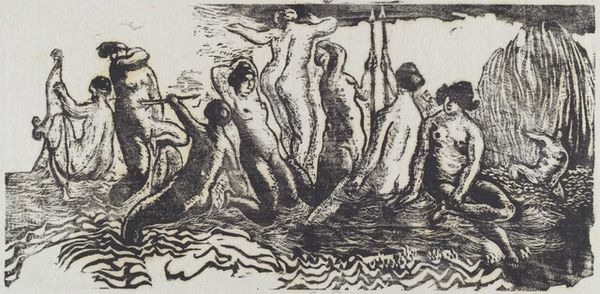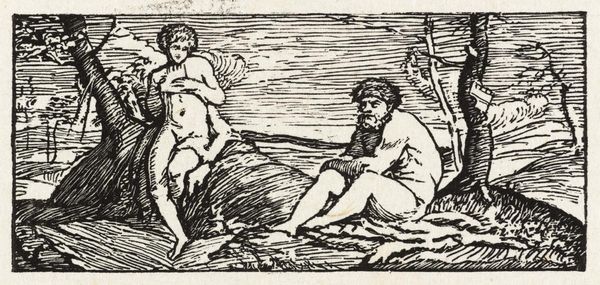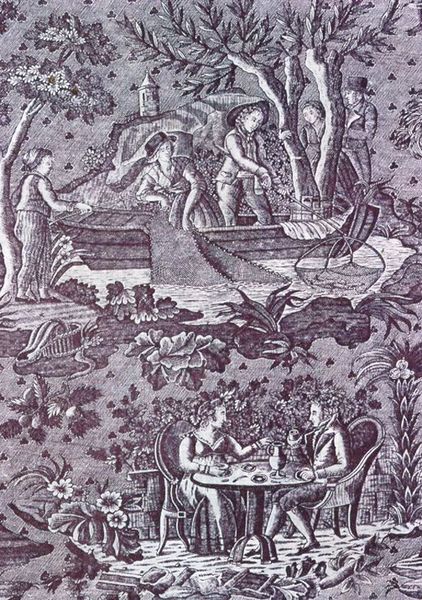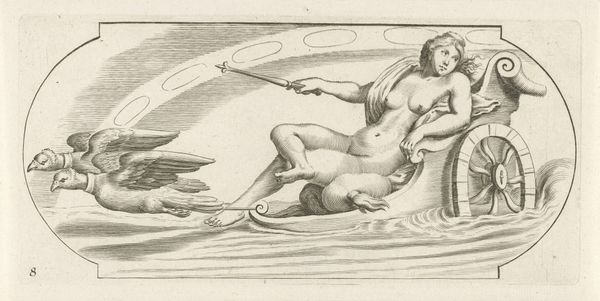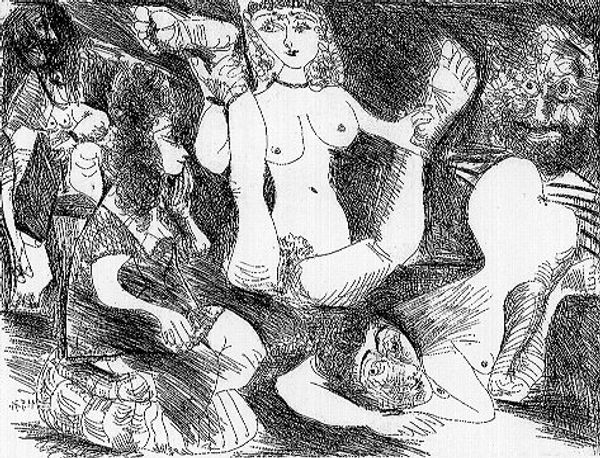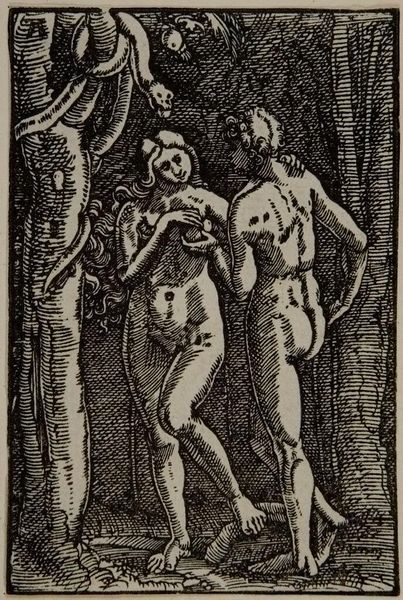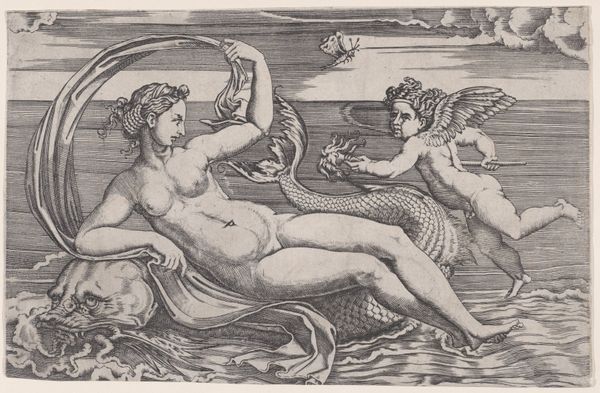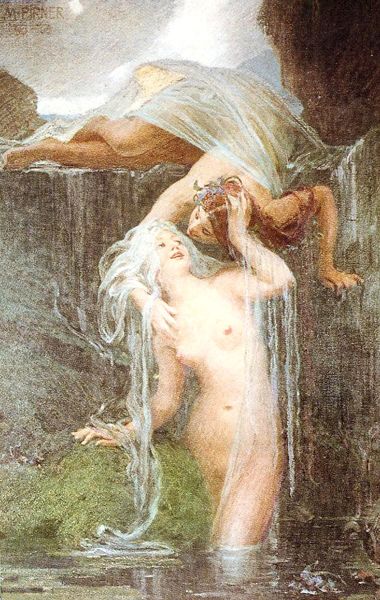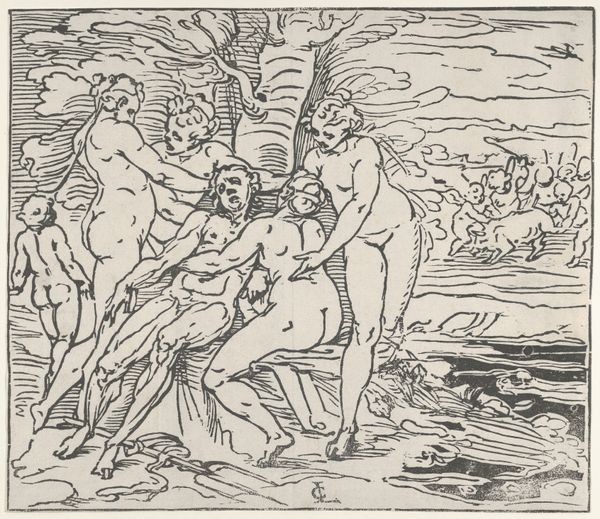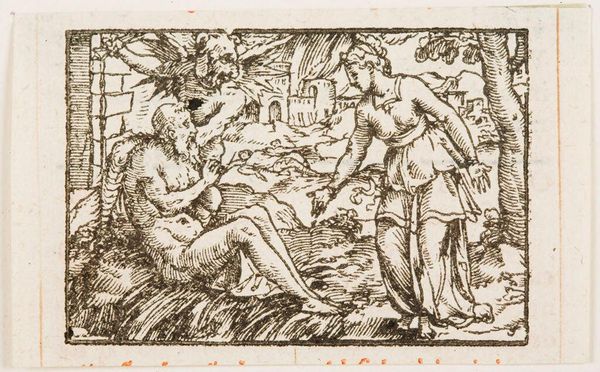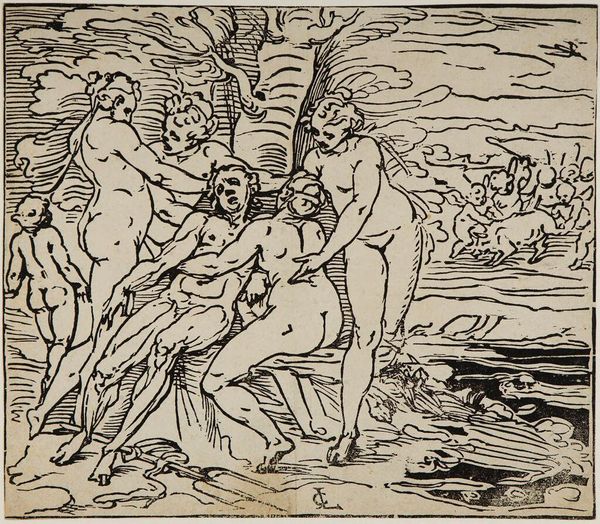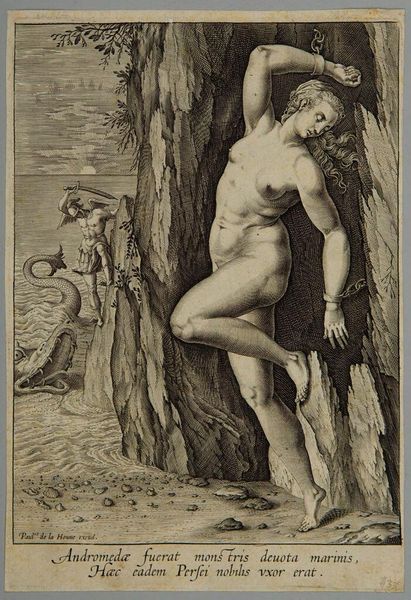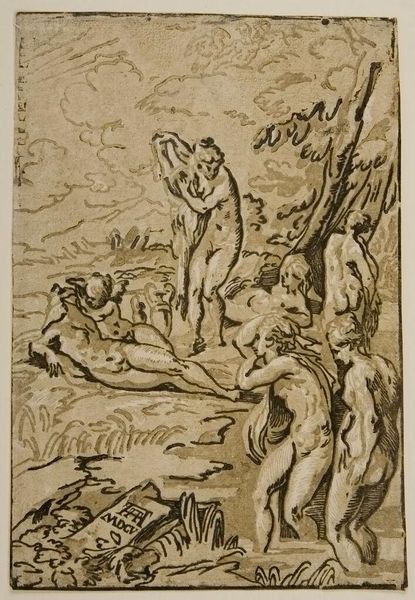
#
landscape illustration sketch
#
amateur sketch
#
facial expression drawing
#
pen sketch
#
pencil sketch
#
vehicle
#
female-nude
#
fluid art
#
pen-ink sketch
#
human
#
tattoo art
#
pencil art
#
environment sketch
Dimensions: 21 x 30 cm
Copyright: Rafael Zabaleta,Fair Use
Editor: So, here we have Rafael Zabaleta's "Surrealistic dream," created using what appears to be pen and ink. The unsettling imagery gives it a rather bleak, almost apocalyptic mood, and the composition feels really unbalanced. How do you interpret this work? Curator: It's fascinating to consider this piece in the context of Zabaleta’s time. Looking at the desolate landscape and distorted figures, it's hard not to see reflections of the political turmoil and social anxieties that permeated much of the 20th century, particularly in Europe. Does the crude drawing style evoke any particular historical art movements for you? Editor: I see hints of Surrealism, of course, maybe a touch of German Expressionism with those anguished faces. The destroyed architecture and lonely car also suggest trauma. Curator: Precisely! Zabaleta was painting in a world reshaped by conflict and industrialization, and his surreal landscapes read as responses to those dramatic shifts. He uses these almost nightmarish images to force the viewer to confront the uncomfortable realities of modern life and how society's structures were under great pressure. It makes you wonder who the artist seeks to indict or celebrate with the drawing. Editor: That's interesting. It felt initially very personal and introspective, but considering the history, it becomes more of a public statement. Curator: Exactly. Art doesn't exist in a vacuum. Understanding its historical backdrop reveals its potential to engage in socio-political commentary, even through something as seemingly personal as a "Surrealistic dream." It makes you consider the public function of the imagery. Editor: I see that now. I’ll never look at surrealism the same way again. Curator: And I find myself pondering the responsibility of artists in times of upheaval, how they act as visual historians.
Comments
No comments
Be the first to comment and join the conversation on the ultimate creative platform.
